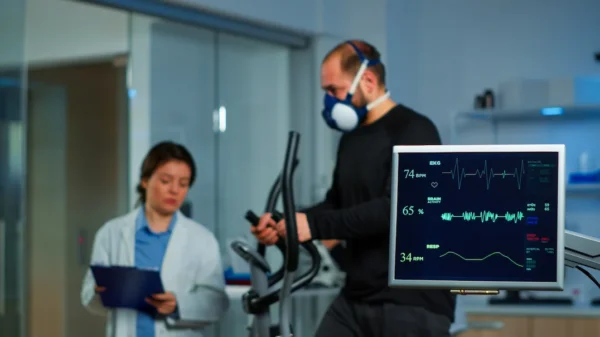The Tilt Table Test is a diagnostic test used to evaluate the cause of fainting (syncope), dizziness, or sudden drops in blood pressure or heart rate. It is most commonly performed when vasovagal (reflex) syncope, orthostatic intolerance, or unexplained fainting is suspected and routine tests have not provided a clear answer.
The purpose of the tilt table test is to observe how the heart rate and blood pressure respond to changes in body position, under controlled and monitored conditions.
Why Is a Tilt Table Test Performed?
In some people, fainting episodes occur because the body’s normal reflexes that control heart rate and blood pressure do not respond appropriately to standing or upright posture. This can lead to reduced blood flow to the brain and loss of consciousness.
The tilt table test helps determine whether symptoms are caused by:
- Vasovagal (reflex) syncope
- Excessive heart rate slowing or pauses
- Sudden drops in blood pressure
- Abnormal autonomic nervous system responses
It is especially useful when fainting is recurrent, unexplained, or associated with injury, and when an electrical or reflex cause is suspected.
How to Prepare for the Tilt Table Test
Before the test, you may be asked to avoid eating or drinking for several hours. Certain medications that affect heart rate or blood pressure may be adjusted temporarily, depending on the reason for the test.
You will be advised to wear comfortable clothing. The test is usually performed in a hospital or specialized cardiology unit under continuous monitoring.
What Happens During the Tilt Table Test?
During the test, you lie flat on a special table equipped with safety straps to prevent falling. Monitoring equipment is attached to continuously measure heart rate, blood pressure, and sometimes oxygen levels.
After an initial resting period while lying flat, the table is slowly tilted upward, usually to an angle between 60 and 70 degrees. This position simulates standing while allowing close observation in a safe environment.
You remain in the tilted position for a defined period while your vital signs and symptoms are carefully monitored. In some cases, medications may be given to enhance the test response if symptoms do not occur naturally.
What Will I Feel During the Test?
Many people feel nothing unusual during the early part of the test. If the test is positive, you may experience symptoms similar to your real-life episodes, such as lightheadedness, nausea, sweating, warmth, visual dimming, or fainting.
If symptoms occur, the table is quickly returned to a flat position, and recovery usually happens rapidly. Medical staff are present at all times to ensure safety.
Is the Tilt Table Test Safe?
The tilt table test is generally safe and well tolerated. Symptoms that occur during the test are temporary and closely monitored.
Fainting during the test is not dangerous in this controlled setting and often provides valuable diagnostic information. Serious complications are very rare.
What Do the Results Mean?
A positive tilt table test supports a diagnosis of reflex (vasovagal) syncope or related autonomic conditions. It helps clarify whether symptoms are driven by heart rate slowing, blood pressure drops, or a combination of both.
A negative test does not completely exclude reflex syncope, but it may prompt further evaluation or alternative testing, depending on the clinical context.
The results help guide treatment decisions, including lifestyle measures, medications, and in selected cases advanced therapies such as cardioneuroablation or pacing.
What Happens After the Test?
Most people can go home shortly after the test and resume normal activities the same day. Your doctor will review the results with you and explain what they mean in relation to your symptoms.
Based on the findings, a personalized management plan is developed.
In Summary
The Tilt Table Test is a valuable diagnostic tool for evaluating unexplained fainting and symptoms related to abnormal blood pressure or heart rate regulation. By safely reproducing upright posture under medical supervision, it helps identify reflex and autonomic causes of syncope and guides appropriate treatment strategies.
Reference: Tilt Table





